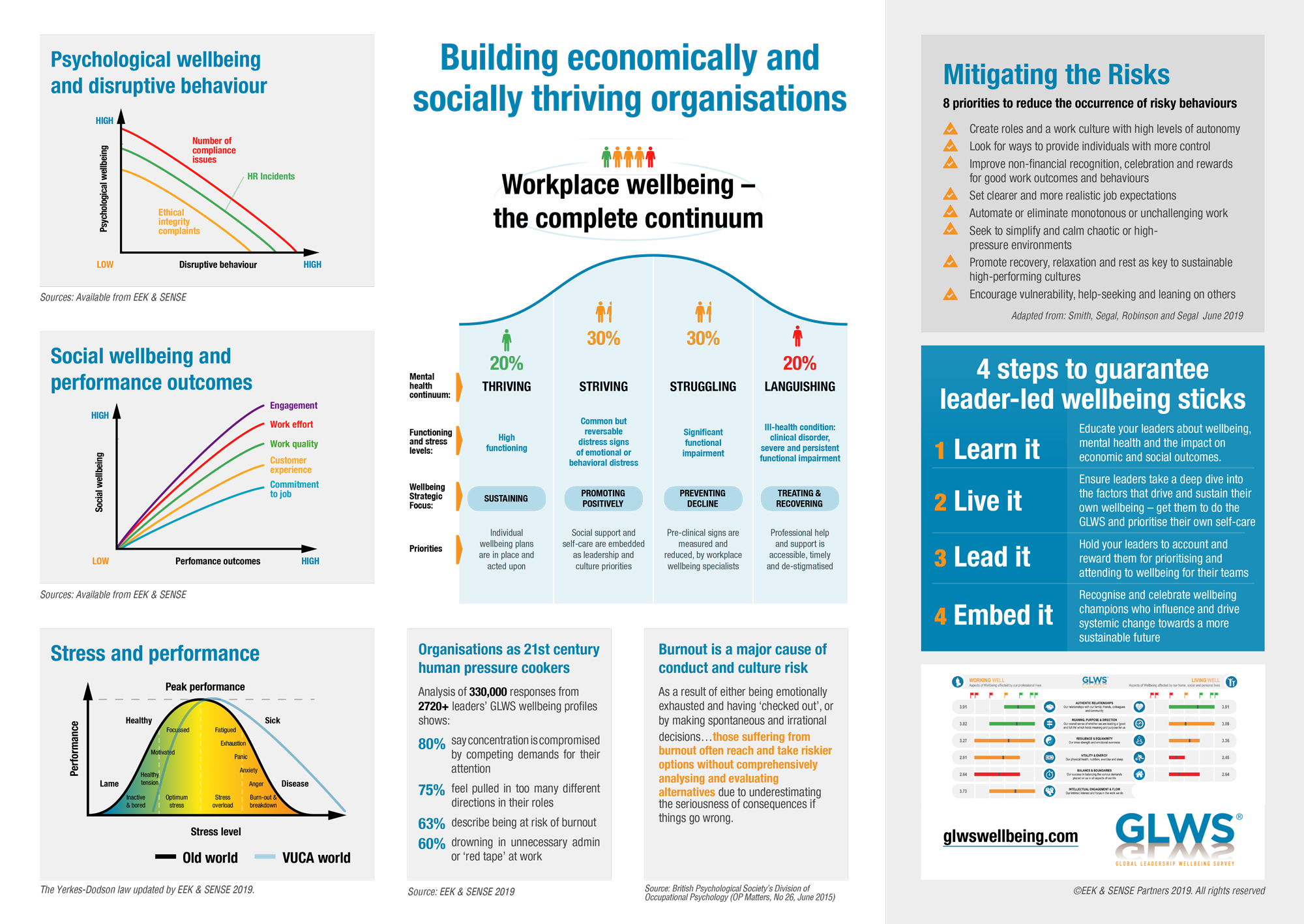The facts and figures on wellbeing as a driver of thriving humans and business
The facts and figures on wellbeing as a driver of thriving humans and business
Firstly, thanks to our amazing and engaged community of readers for all your responses to our last piece about the impact of mental ill-health and low wellbeing, and how if left unmanaged it may lead to a whole range of distress and loss of function for the humans in our workplace, and suboptimal consequences for business performance.
It really got us thinking about how we tackle this issue – and we felt the best next step would be to continue this conversation with you directly.
So…I’ve created an easy-peasy four-question survey where I’d like you to share some of your observations and insights around how to lead workplace wellbeing.
We’ll reveal detailed findings as part of a webinar I’m leading in December which I’d love you to attend – but you’ll need to register a place to reserve an allocated space.
You can skip straight to the (quick) questionnaire here, or find it embedded at the bottom of this article.
But first, let’s get a bit more context on the issue.
The facts and figures on workplace wellbeing
As we’ve mentioned before, wellbeing isn’t just for the distressed – it’s for 5 out of 5 employees.
Wellbeing needs to be a whole-istic (get it?) consideration to succeed – no ifs or buts – inclusive, relatable and meaningful for everyone in the organisation. Otherwise, all we’re doing is unintentionally marginalising the vulnerable and ignoring the biggest majority of us who, whilst hopefully not unwell per se, are potentially far from feeling our best selves.
How do we help those of us who are clinging on by the skin of our teeth, struggling but so far valiantly coping? How do we make it less about striving and more about thriving? Then there’s the big trick we’re missing – not galvanising the myriad upside benefits associated with high wellbeing and positive mental health, such as higher productivity, engagement and innovation.
Despite the corporate regulators closing in on the behavioural and cultural aspects of conduct, our organisations, boards and risk professionals are well-advised to resist their natural temptation – to write more rules to manage these non-financial risks. The more rules, the less autonomy and less control. The less freedom and self-efficacy, the lower our wellbeing. The lower our wellbeing, the worse our behaviour, performance and conduct.
“The real powerbrokers in this scenario are organisational psychologists, people and culture professionals and behavioural scientists specialising in stress, burnout, mental health and workplace wellbeing.”
– Dr Órla NicDomhnaill, November 2019
We feel a huge opportunity (and responsibility) to guide organisations towards becoming thriving, well workplaces with high levels of psychological safety, workplace civility and where mental health and wellbeing are prized cherished assets – and in doing so, we’ll undoubtedly see an associated reduction in conduct and culture risks.
Here are some of our favourite models, facts and figures on one page that illustrate the importance and nuance of this issue. Please feel free to share and distribute this wellbeing infographic – help get the word out and hopefully good karma will come our way in seeing GLWS utilisation go through the roof. Now that would be a lovely upside risk to have!
A wellbeing survey YOU can contribute to
Now that we’re all caught up, I want to reveal the next stage of this journey – some field research. This will be super simple for you to contribute to, but enlightening once we can share the rolled-up insights from across the GLWS community.
As mentioned, what we’d love to understand better is what you’ve seen in your work with organisations and their leaders – specifically around:
- How well you think leaders really understand wellbeing, mental health and the various individual and business impacts?
- What evidence you see of self-care behaviours as a priority?
- Whether wellbeing is regarded as a leadership priority and a prized asset?
- And, what leaders’ roles are in mobilizing and embedding cultures of wellbeing?
This will help us answer the big question – what can we do about all this?
You can complete the survey below. Pleeeeeeeeese!
Create your own user feedback survey
Get the full breakdown
The information we collect will feed into our December webinar, where I’ll share the results and discuss what a set of next steps might look like for leaders, organisations and wellbeing practitioners.
This is the power of our GLWS community in full force – a kernel of an idea turning into a snowball powered by our open and supportive feedback loop. It reinforces why we do these things!
We look forward to welcoming you at our December webinar – but remember, you’ll need to register to secure a place as places (even virtual ones apparently ?) are limited.
Presented by Audrey McGibbon
Friday 13th December, 10.30am – 11.30am (AEST)
$50 AUD ($25 AUD for GLWS Accredited Community members)
Numbers limited.
See the GLWS™ in action now with a suite of sample reports
If you are a leader, or a coach working with leaders, you can find out how the GLWS works in practice by reviewing our suite of reports. Sign up here to get instant access.

